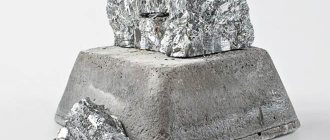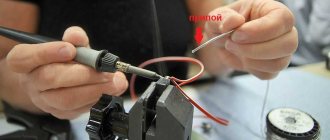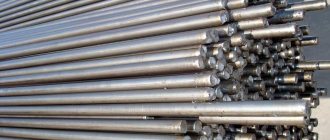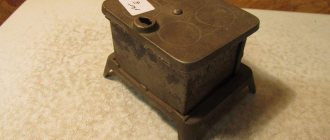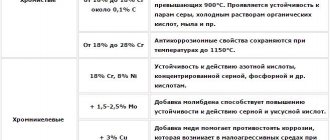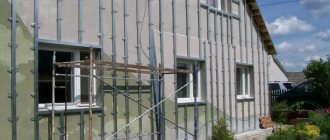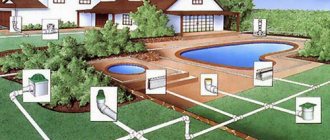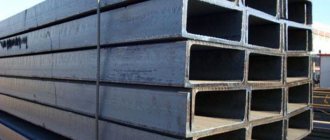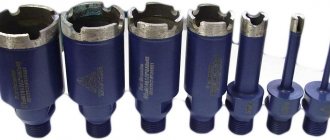What is passivation? Description, features and application of passivation
Overtaken by time. In 1836, a physicist was found who determined the reason for the passivation of metals. Michael Faraday saw the root of it. This is an English experimenter. He suggested that passivation is associated with oxide deposits on the surfaces of metals.
Faraday's statement was ignored. Vladimir Kistyakovsky was more fortunate. This is already a domestic physicist. He spoke out in support of his English colleague from the past 100 years later.
In the photo, physicist Vladimir Kistyakovsky
Kistyakovsky developed Faraday's views, formalizing them into a well-known theory. However, there is a second theory of passivation... However, first, let’s look at the concept itself.
What is passivation?
The passivation process is a decrease in the chemical activity of the metal. This refers to the tendency to corrosion. It is no secret that products based on iron, nickel, chromium, aluminum and a number of other metals react with oxygen in the atmosphere and water.
The interaction involves atoms in contact with it, that is, surface ones. The result of the reaction is rust. The concept usually refers to iron oxides, but plaque also forms on other metals.
The exception is noble elements, such as gold and platinum. They are chemically inert, which is why they are valued. Rust does not corrode them; jewelry is stored for millions of years.
Passivation of metals is the formation of the same “rust”, but in a slightly different form. Surfaces are covered not only with oxide films, but also with phosphate, sulfate, and chloride films.
Their composition depends on what metal is being worked with. Chemical passivation is a sharp decrease in the rate of its corrosion. On the one hand, the film on the surface is the result of the destruction of the material. On the other hand, the coating protects the lower layers of the metal. To extend its life, a film several tens of nanometers thick is enough.
The photo shows the passivation process
An alternative view of surface passivation comes down to its absorption of oxygen. It sinks into the surface pores of the metal. At the same time, the valence of its atoms increases. This reduces their chemical activity. By the way, oxygen can be taken not only from the atmosphere or water. Next, let's get acquainted with passivation media.
Passivation media
Different metals react differently to oxidizing environments. Thus, iron passivation is carried out in concentrates of sulfuric and nitric acids. These are strong oxidizing agents.
The metal enters into a short-term interaction with them, but the reaction rate drops sharply with the formation of a surface film or an increase in the valence of the upper atoms.
Passivation with low-saturation nitric acid is ineffective for iron, as well as for aluminum, nickel, and chromium. Weak oxidizing agents are passivated, for example, magnesium and titanium.
Even river water blocks the corrosion of the latter. There are two ways to influence metal with it. The first is simple contact, coating or dipping the surface.
The second method is called electrochemical. In this case, a current is passed through the passivation solution . Under its action, the protective film is uniform.
This is exactly what is formed, for example, by passivation of copper . Current is passed through chromium-containing solutions. It is in them that copper acquires the greatest resistance to corrosion.
Copper after passivation
Passivation of aluminum is associated with potassium dichromate, or more precisely, its solution. A small addition of hydrogen fluoride is required. A simple chemical blocking of the surface is sufficient for satisfactory results.
As you can see, oxidizing solutions for passivation can be complex. Take, for example, 200 grams of sodium dichromate and 10 milliliters of sulfuric acid. This is the "recipe" for a mixture for zinc passivation .
Proportions are based on 1 liter of water. But, the time the metal is kept in the solution is also important. So, a 5-second dive will give a rainbow film with green flashes. Half a minute passivation of zinc leads to a brown, brown coating.
Preparation for passivation
What is meant by the term “passivation of metals” has been discussed. From the above it is clear that the oxidizing agent must interact with the surface of the workpiece.
But how to interact if the metal is dirty? The reaction will take place between the oxidizing agent and third-party elements, and not the atoms of the alloy. Therefore, passivation of chromium , iron and other metals is carried out after their purification.
It comes down to washing or sanding. The latter is usually done with sandpaper. Afterwards, an electrolyte, or a simple oxidizing solution, is prepared.
In the case of an electrolytic process, the preparatory work includes debugging the required current strength. Successful passivation of brass , chromium, iron and other metals takes place at a voltage of 12 degrees.
The photo shows equipment for passivation of metals
That is, the flow of electrons in the solution should be slow. By the way, under the influence of current, any atoms can be brought onto the surface of metals. You can make gold, platinum, palladium plating. A cathode and anode are required.
passivation is carried out using special devices. They are available for free sale. The installations are compact but expensive. Models under 100,000 rubles are rarely sold.
As a rule, the cost of devices starts from 200,000. The price tag is due to the multifunctionality of the equipment. In addition to passivation, machines, as a rule, degrease surfaces, remove oxides from them, polish and even mark them.
Application of passivation
It is clear that passivation prolongs the life of metal products, but which ones and in which cases. Let's start with cars. They often contain elements susceptible to corrosion. If these elements are visible, they must be painted.
You must not allow rust to appear from under the decorative protective layer. Therefore, passivation is carried out before painting. A number of solutions for it not only provide a film on the surface of parts, but also degreases them.
Some passivators, despite their effectiveness, are prohibited. The European Union, for example, has banned chromium oxide. It's toxic. However, other passivators are inferior to the dangerous compound in effectiveness.
European car and household goods manufacturers are forced to look for viable alternatives. One of them is complex zirconium fluorides. These are expensive substances, which affects the price of the final product.
The photo clearly shows the result of passivation
Passivation of steel is carried out in steam turbines. Chromium oxide is not needed here. The interest lies elsewhere. The question arises, why passivation of stainless steel , since it is stainless.
However, such an alloy can be destroyed if it is constantly in contact with aggressive environments. The latter may include parts made of other types of steel that are susceptible to corrosion, or welding elements.
Sometimes iron particles remain on the seams. This is enough to cause even stainless steel to rust. So the cleaning and subsequent passivation of the seams , and sometimes all products, are carried out.
The passivation method also works in dentistry. In particular, implants are treated. Their lower part is screws mounted into the jaw bone. Filling material is applied to the screws, and a crown is placed on top.
They resort to implantation when a tooth is removed and not even the roots remain. So, the bottom screw is made of reliable, but not precious alloys. To avoid their destruction in the jaw, which can lead to infection, passivation is carried out.
Passivation of silver , steel, brass and other metals is often carried out for decorative purposes. It has already been said that short-term exposure to an oxidizing solution gives a thin, iridescent film.
The photo shows a wrench without the use of metal passivation
It shines and shimmers. As a result, taps, door handles, bathtub and sink drains look attractive. In addition, the protective film eliminates the possibility of allergies to the product. For example, nickel is added to many alloys.
About a quarter of people cannot tolerate it and experience skin redness and itching. A similar reaction occurs to alloys for jewelry. Therefore, conscientious manufacturers passivate jewelry.
By the way, the essence of the concept comes down to “passivity”. It is from this noun that the term is derived. The purpose of the method is to make metals chemically passive, to force them to refuse to interact with other substances.
Passivation
To extend the service life and increase the corrosion resistance of zinc coatings, passivation is widely used. Passivation of zinc coatings is carried out on the basis of solutions containing Cr (VI) or Cr (III). Depending on the necessary corrosion requirements for products, it is necessary to select the correct passivation. The coatings obtained in this way have increased corrosion resistance and a decorative appearance.
Blue passivation
Zinc passivation BLUPASS B
Concentration: 40-100 ml/l
Temperature: 15-25 ºС
- trivalent blue passivation without cobalt, intended for passivation of zinc coatings formed from all types of electrolytes
- corrosion resistance for more than 48 hours (in a salt fog chamber) until white corrosion appears when processing parts on suspensions
- possibility of obtaining shiny light blue coatings
Zinc passivation BLUPASS BC
Concentration: 40-100 ml/l
Temperature: 15-25 ºС
- trivalent blue passivation with cobalt, intended for passivation of zinc coatings formed from all types of electrolytes
- corrosion resistance for more than 72 hours (in a salt fog chamber) until white corrosion appears when processing parts on suspensions
- provides light coatings
- possibility of obtaining coatings with high gloss and brilliant tint
Zinc passivation BLUPASS FOC
Concentration: 20-40 ml/l
Temperature: 15-30 ºС
- trivalent blue passivation without cobalt, intended for passivation of zinc coatings formed from all types of electrolytes
- Corrosion resistance up to 48 hours (in a salt fog chamber) until white corrosion appears when processing parts on suspensions
- passivation gives coatings an intense blue color
Zinc passivation BLUPASS HT
Concentration: 40-80 ml/l
Temperature: 15-30 ºС
- trivalent blue passivation with cobalt, intended for passivation of zinc coatings formed from all types of electrolytes
- characterized by exceptional resistance to high temperatures
- corrosion resistance for more than 72 hours (in a salt fog chamber) until white corrosion appears when processing parts on suspensions
Zinc passivation BLUPASS FTA
Concentration: 20-30 ml/l
Temperature: 15-30 ºС
- trivalent blue passivation with cobalt, intended for passivation of zinc coatings formed from all types of electrolytes
- corrosion resistance of more than 172 hours (in a salt fog chamber) before the appearance of red corrosion when processing parts on suspensions
- passivation gives coatings an intense blue color
Thick layer passivation
Zinc passivation TRISTAR FA
Concentration: 100-220 ml/l
Temperature: 15-40 ºС
- technologically advanced, thick-layer passivation, gives coatings an intense blue color
- the content of cobalt and other compounds increases corrosion resistance
- corrosion resistance of about 300 hours (in a salt fog chamber) until white corrosion appears when processing parts on suspensions
- passivated coatings can withstand high temperatures, which does not have a negative effect on color and anti-corrosion protection
Zinc passivation TRISTAR FREECO
Concentration: 100-220 ml/l
Temperature: 15-45 ºС
- Thick-layer passivation without cobalt, highly corrosion resistant
- coatings of various colors are formed - from yellow-red to green-blue
- Corrosion resistance up to 300 hours (in a salt fog chamber) until white corrosion appears when processing parts on suspensions
- the solution is resistant to contamination
Yellow (iridescent) passivation
Zinc passivation TRISTAR YELL M
Concentration: 5-7 ml/l
Temperature: 15-45 ºС
- rainbow chromate based on hexavalent chromium (VI)
- low working passivation concentration
- the color of the coatings ranges from yellow to yellow-green
Zinc passivation TRISTAR YELL EKO
Concentration: 50-150 ml/l
Temperature: 18-40 ºС
- environmentally friendly zinc passivation with high corrosion resistance
- based on trivalent chromium(III) complexes
- does not contain hexavalent chromium (VI), which has a positive effect on wastewater treatment and environmental protection
- corrosion resistance up to 240 hours (in a salt fog chamber) until white corrosion appears when processing parts on suspensions, up to 150 hours for drums
Black passivation
Zinc passivation TRISTAR B EKO
Concentration: Tristar B EKO 1 - 50 ml/l
Tristar B EKO 2 — 25-50 ml/l
Temperature: 15-30 ºС
- black trivalent passivation designed for all types of zinc electrolytes
- coatings are characterized by black color and shine
- Corrosion resistance up to 24 hours when processed on hangers, sealing/varnishing required
Passivation of silver
Silver passivation ESPASS
- chemical process of passaging silver and silver-plated parts
- The passive layer does not reduce the conductivity of silver and does not have a negative effect on soldering
- The passive layer is transparent and does not affect the color of the silver
Additives for passivation
Amplifier TRISTAR NANO
- nanostructured additive to enhance the passivation effect
- increases corrosion resistance
- significant increase in wear resistance of coatings
Inhibitor for passivation FENDEX
Concentration: 1-2 ml/l
- significantly increases the service life of passivation
- reduces the solubility of metals
- in case the surface is not lightened, it leads to minimization of the negative impact of pollution
- can be used for any passivation
Surface preparation Galvanizing Passivation Impregnation Chrome plating Nickel plating Chemical nickel Tin plating Copper plating
